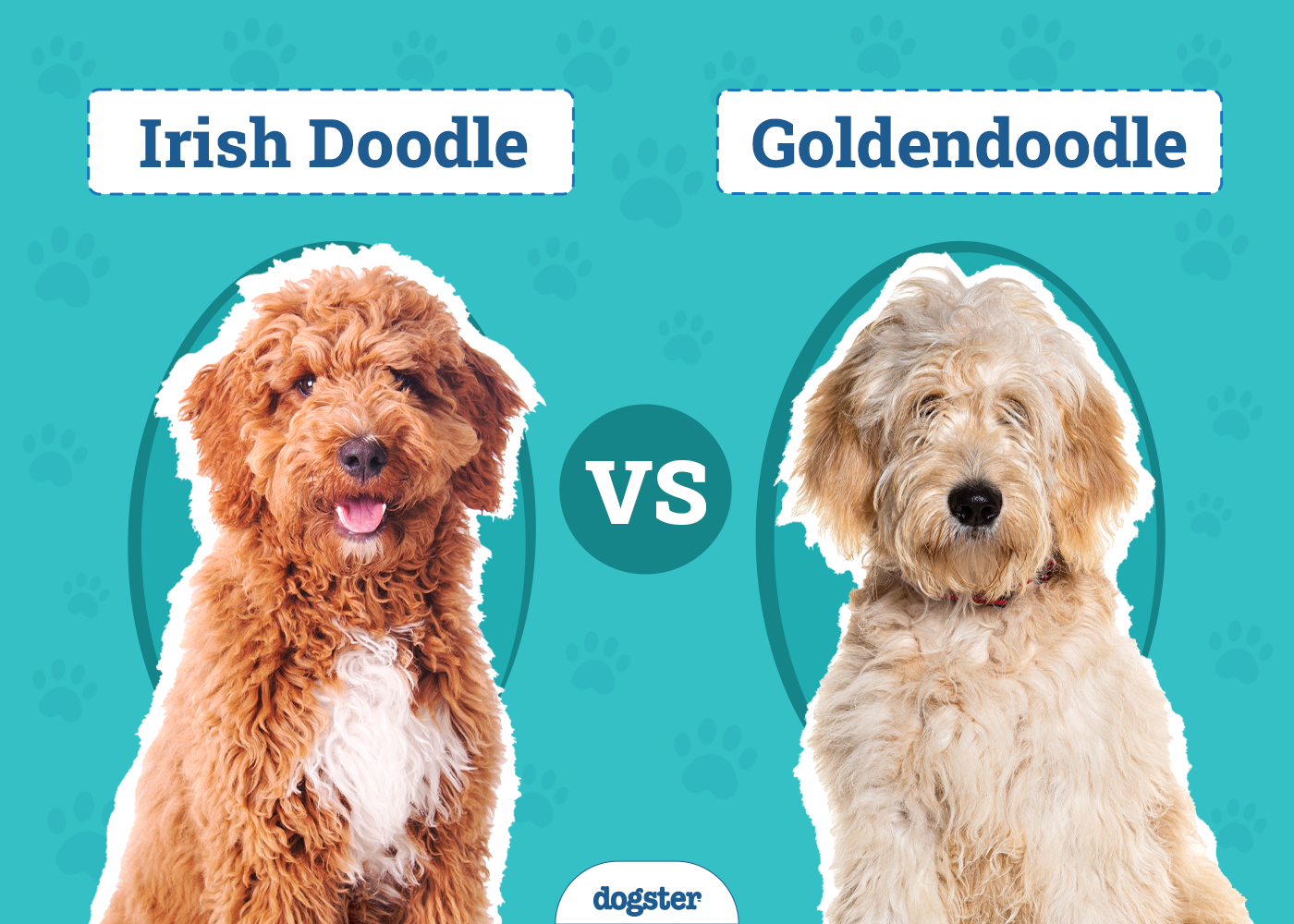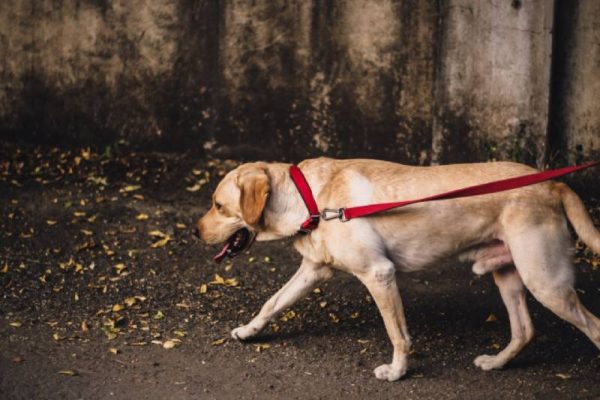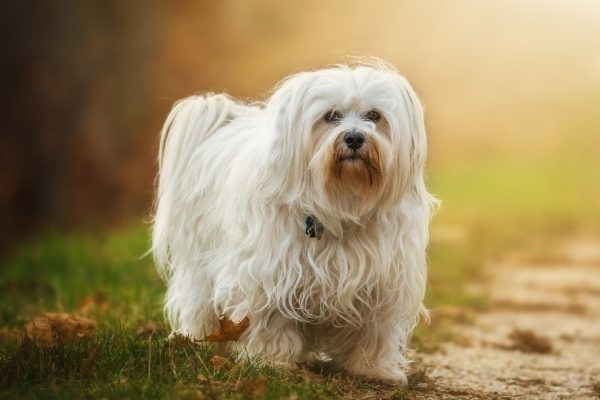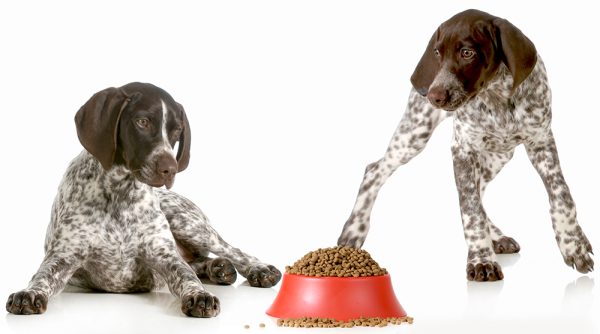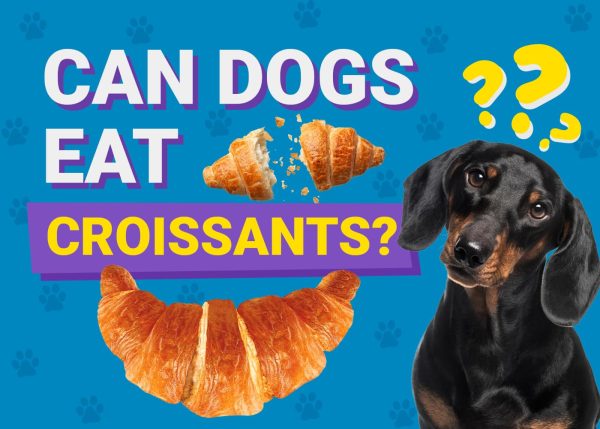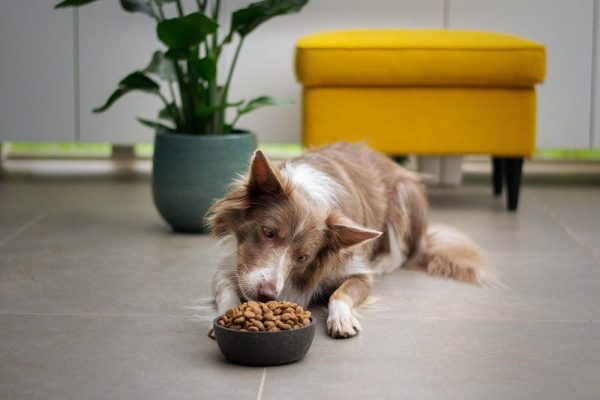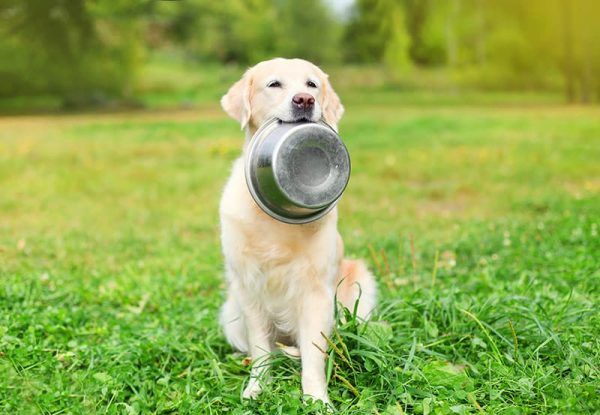In this article
View 3 More +The Irish Doodle and Goldendoodle are both Poodle mixes, which means they share some similarities. However, because the Irish Doodle has an Irish Setter parent and the Goldendoodle has a Golden Retriever parent, there are also some marked differences. Both breeds vary according to the size of the Poodle in the parentage, but the Irish Doodle tends to be taller than the Golden.
The Irish Doodle and Goldendoodle are friendly and sociable breeds with plenty of energy to burn. Both pups are fairly easy to train, but the Irish Doodle may take more training sessions and repetitions to understand new commands. Read on to learn the primary differences and determine which breed is best for you and your home.

Visual Differences
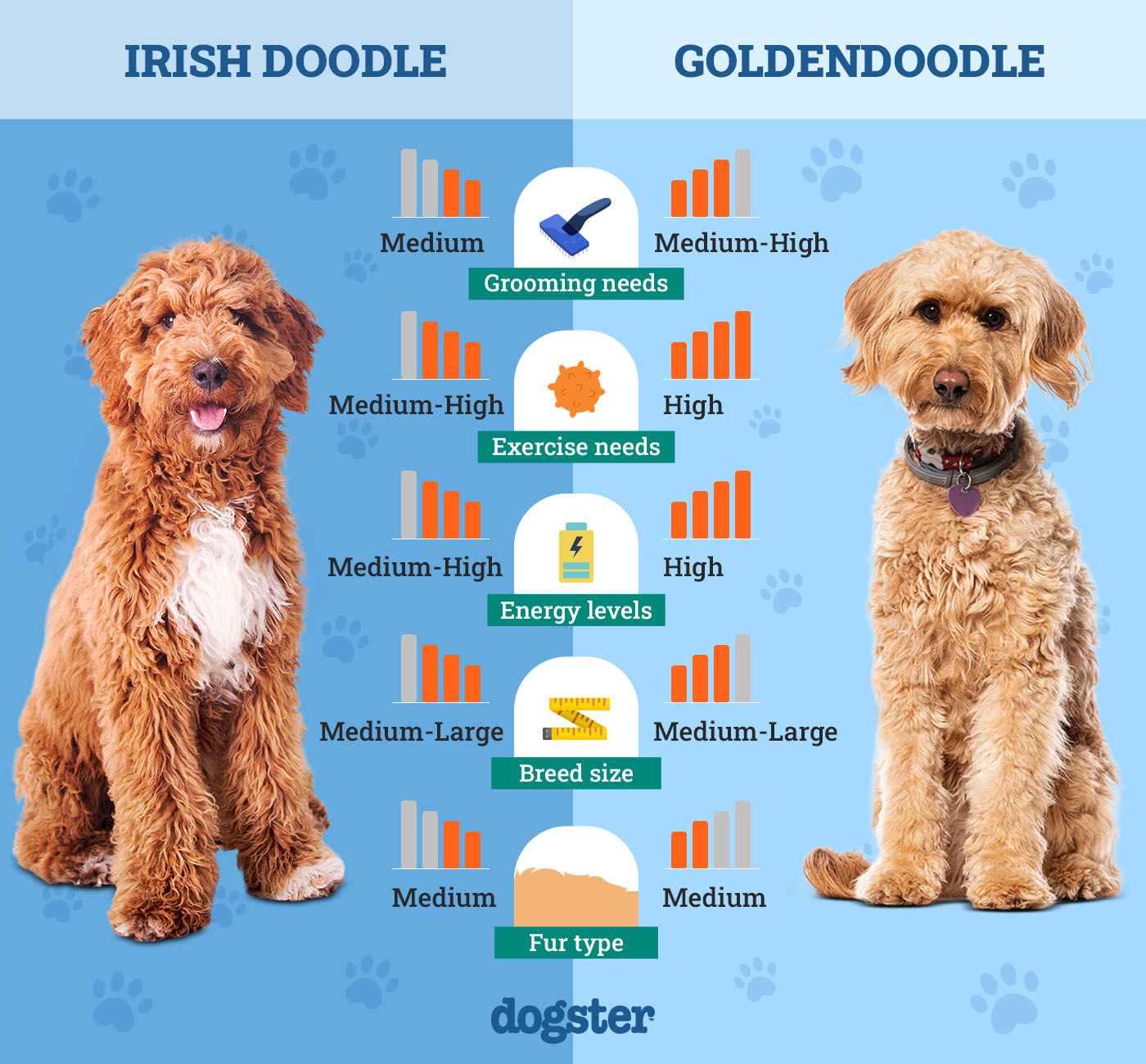
At a Glance
- Average height (adult): 12–28 inches
- Average weight (adult): 24–70 pounds
- Lifespan: 10–15 years
- Exercise: 1+ hours a day
- Grooming needs: Moderate
- Family-friendly: Yes
- Other pet-friendly: Usually
- Trainability: Intelligent, loyal, eager to please, needs regular sessions
- Average height (adult): 13–24 inches
- Average weight (adult): 15–90 pounds
- Lifespan: 10–15 years
- Exercise: 1+ hours a day
- Grooming needs: Moderate
- Family-friendly: Yes
- Other pet-friendly: Usually
- Trainability: Intelligent, very eager, quick to learn

Irish Doodle Overview

The Irish Doodle is one of an increasingly long list of hybrid breeds that have Poodle parentage. In this case, the Poodle is crossed with the elegant but hardworking Irish Setter. Because the Poodle comes in a range of sizes, the size of their hybrid offspring varies. Although the Irish Doodle might grow to be a tall dog, they usually don’t weigh as much as other similarly tall breeds. The Irish Setter and Poodle parents are working dogs, but the Irish Doodle can make a great companion pet that lives with family and gets along with strangers and other animals.
Appearance
Most Irish Doodles are first-generation hybrids, which means that they have been bred by directly crossing a Poodle and an Irish Setter rather than breeding two Irish Doodles. This means the hybrid can take on some features of one parent rather than combining the two. You may end up with a cross with the Poodle’s low-shedding coat or the Irish Setter’s heavy-shedding coat. Similarly, the coat can be curly like a Poodle’s or wavy like the Setter. Colors range from the red of the Setter to the apricot and black of the Poodles.
Sizes can also vary, usually according to the size of the Poodle parent. Smaller Irish Doodles can measure as little as 12 inches and weigh around 25 pounds, while larger dogs may be as tall as 28 inches and weigh 70 pounds.
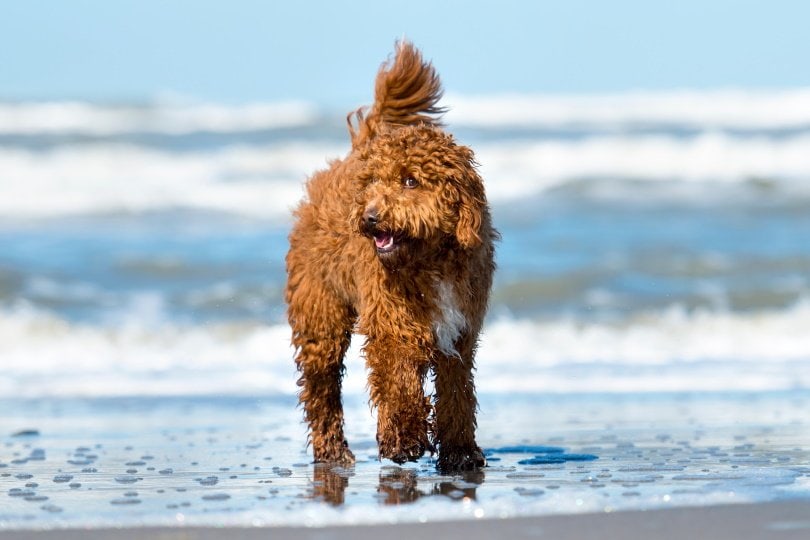
Character
Irish Setters and Poodles were bred as working dogs. Poodles were bred to retrieve while Setters were bred to find and flush out birds. The resulting hybrid can be an effective working dog, too, but they also make an excellent companion dog or family pet.
They are typically gentle around children, and they have more than enough energy to join in games or other forms of family exercise and play. They are also good with strangers and tend to be good with other dogs and animals.
Training
With two working dog parents, including the intelligent Poodle, it is hardly surprising that the Irish Doodle is an intelligent dog that is considered easy to train. Training should start when the dog is still a puppy, and you will need to offer ongoing training to get the best results. The Irish Doodle can take a few more repetitions to learn new commands, compared to the Goldendoodle, but it is certainly no slouch.
Health
Irish Doodles have deep chests; like other breeds with this characteristic, they are somewhat prone to bloat. Their size also means they are prone to hip dysplasia, which can be painful and may lead to other problems like arthritis and general joint pain.
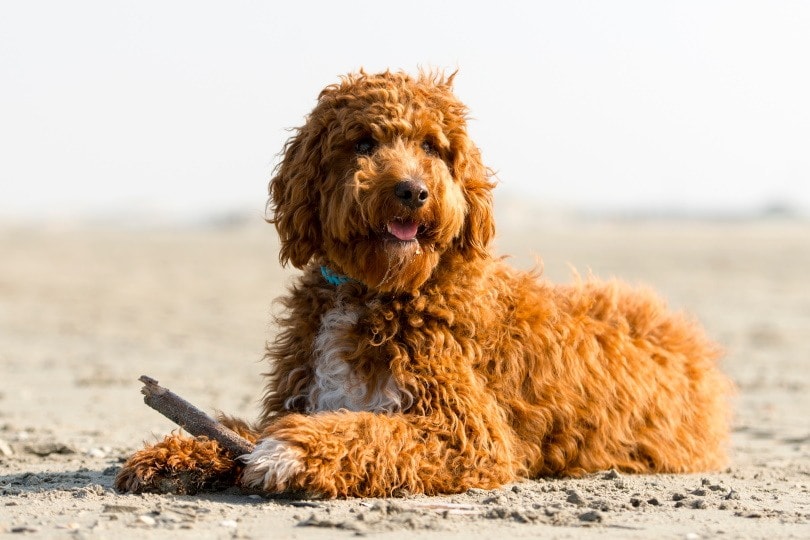
Care
Whether the Irish Doodle takes after the Poodle or Irish Setter parent, their coat requires regular grooming. The Poodle’s coat grows continuously, so despite being a low-shedding breed, Poodles need daily brushing and can benefit from regular cutting or trimming. The Irish Setter has long, luscious hair and is a much heavier shedder than the Poodle. Daily brushing is vital to keep your Irish Doodle’s coat healthy and shiny.
Suitable For:
Irish Doodles are ideal for owners with a little more experience in training and caring for dogs. However, inexperienced owners can enroll their pups in obedience classes to help with training. They can live in multi-pet homes without issues and usually become lifelong friends with other pets. They’re gentle around kids and strangers and make excellent pets for large families.
- Fairly quick to learn
- Lively and fun breed
- Loving and loyal to family
- Usually gets along with strangers and other animals
- The coat is going to need daily brushing

Goldendoodle Overview
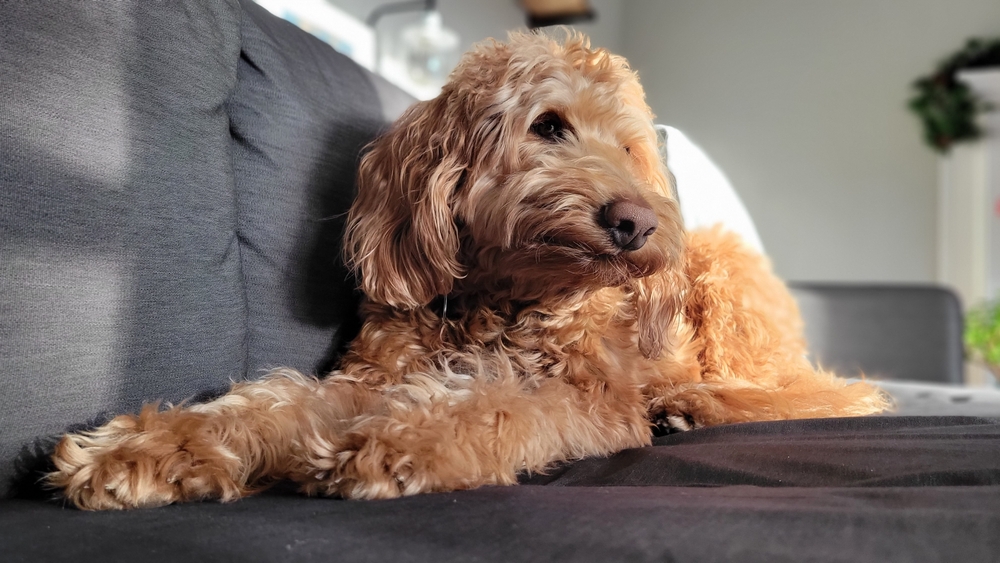
The Goldendoodle is another hybrid with Poodle parentage, but the Poodle is crossed with the Golden Retriever. The Goldendoodle has been bred longer than the Irish Doodle, but several are first-generation pups, so you can’t be sure exactly what you will get. Poodles and Golden Retrievers are very popular pets and have been used extensively as working dogs. We know a lot about both breeds, which provides clues about Goldendoodles.
Appearance
The Goldendoodle comes in various sizes ranging from around 13 to 24 inches tall and weighing between 15 and 90 pounds, which is a significant variance from smallest to largest. This is because Poodles come in an equally wide variety of sizes from toy or miniature to standard.
Although some Goldendoodles combine the curly coat of the Poodle with the straight coat of the Golden, giving a looser curl than the Poodle, some will inherit the coat of one of the parent breeds.
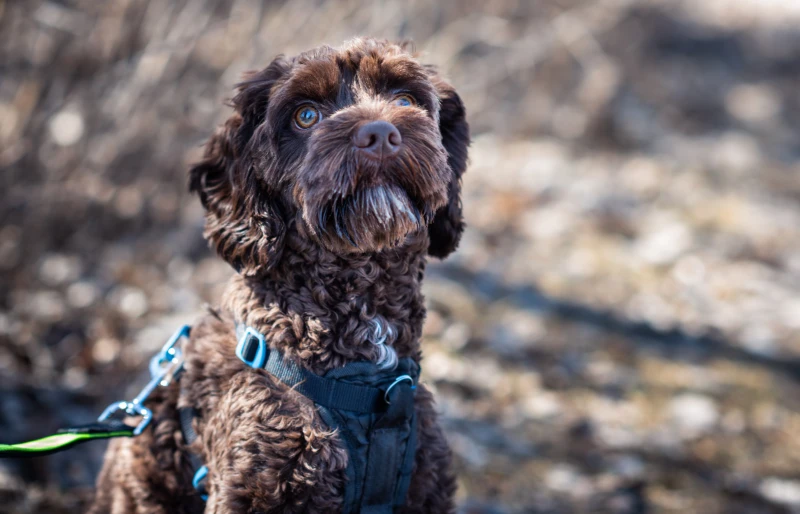
Character
The friendly, loving, and loyal Golden Retriever personality is often exhibited in the Goldendoodle hybrid. Goldendoodles get along with all family members, including children and other pets, and will gladly greet friends and strangers with a wagging tail and a playful attitude. The Goldendoodle loves to be around people, which can lead to separation anxiety if they are left alone for too long.
Training
The Golden Retriever is used extensively as a therapy dog, a guide dog, and in a variety of other service roles, including search and rescue and bomb detection. They are friendly and loyal to their handler but also level-headed, sympathetic, and bright. Goldendoodles, like Golden Retrievers, are recommended for first-time and novice owners for these reasons, and they are also trained as therapy dogs.
Health
Goldendoodles are somewhat prone to hip dysplasia, which means that the hip bone is restricted from sitting in its socket properly. It can cause lameness and may lead to other conditions. Like the Irish Doodle, the Goldendoodleis also more likely to develop Addison’s Disease compared to other breeds. Addison’s Disease is a hormone imbalance that can cause weight loss and a host of gastrointestinal complaints.
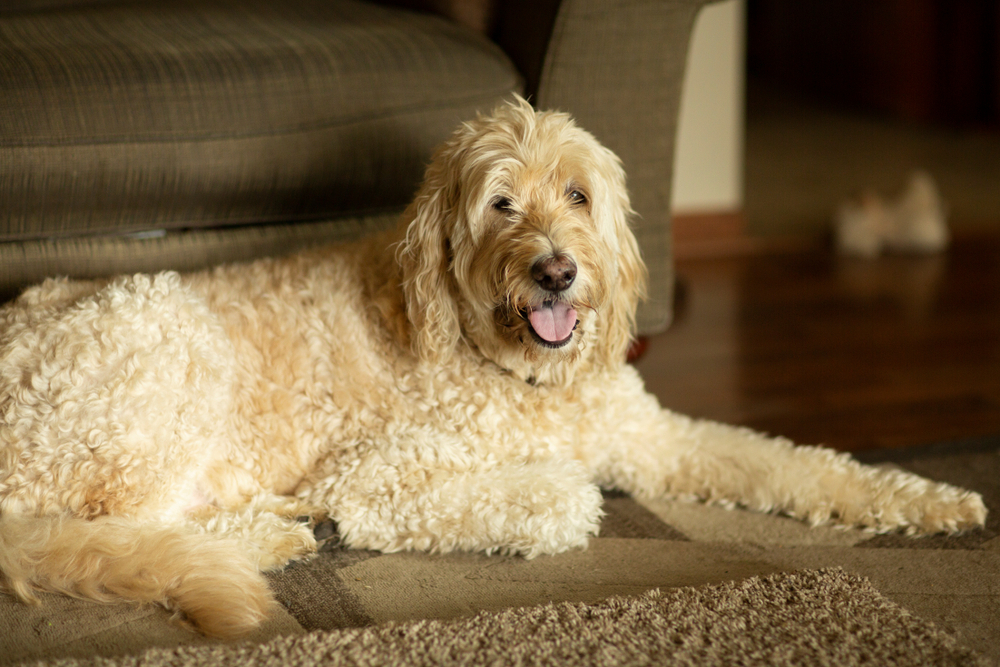
Care
The Goldendoodle requires similar care as the Irish Doodle because they have a similar coat that requires daily brushing. Unless you’re experienced with trimming dogs yourself, they’ll need a professional trim every 4 to 6 weeks. They also need their ears inspected and cleaned and their teeth brushed daily to prevent dental issues.
Suitable For:
First-time owners and families looking for an affectionate companion are ideal for the Goldendoodle. Although they require thorough grooming, Goldendoodles are easy to train and relatively healthy. They get along well with children and other pets, and they also seem to have smiles on their faces. However, they don’t like being alone for very long and can suffer from separation anxiety.
- Ideal for first-time owners
- Intelligent and quick to learn
- Gets along with family, friends, strangers, and other animals
- Can suffer separation anxiety

Poodle Hybrids
There is a long list of hybrid breeds that include the Poodle as one of the parent breeds. Poodles are popular in the creation of hybrid breeds because they are friendly, intelligent, and available in three sizes. The Irish Doodle and Goldendoodle are just two examples, and there are many others, with seemingly more appearing every day. Another reason for the popularity of the Poodle in hybrid breeds is that they are said to have hypoallergenic coats.

Hypoallergenic Dog Breeds
Dogs secrete proteins that can cause allergic reactions. These are present in urine and sweat but also in dander and hair. Dogs that shed a lot tend to cause allergic reactions because the hair and dander are not only on the dog but are usually found on furniture and floating around rooms. Poodles rarely shed, and while they can still cause allergic reactions in people, the reactions tend to be less severe and less frequent. However, it depends on the person, the severity of their allergies, and their level of interaction with the dog.
It is also worth noting that just because a Poodle is used in breeding a hybrid breed, it doesn’t mean that the coat will take on the low-shedding properties of the Poodle parent. This is especially true of first-generation hybrids or descendants of the Poodle and another parent breed.
First-generation hybrids can take on the properties of either parent rather than a combination of the two. By the second generation, breeders have typically identified first-generation hybrids with desirable traits and will then breed these to create more desirable second-generation dogs, and so on.
Poodle hybrids are still relatively new and because there are no breed standards, there is no guarantee that you are getting a second or subsequent generation of the hybrid. You can ask the breeder to get a better idea.
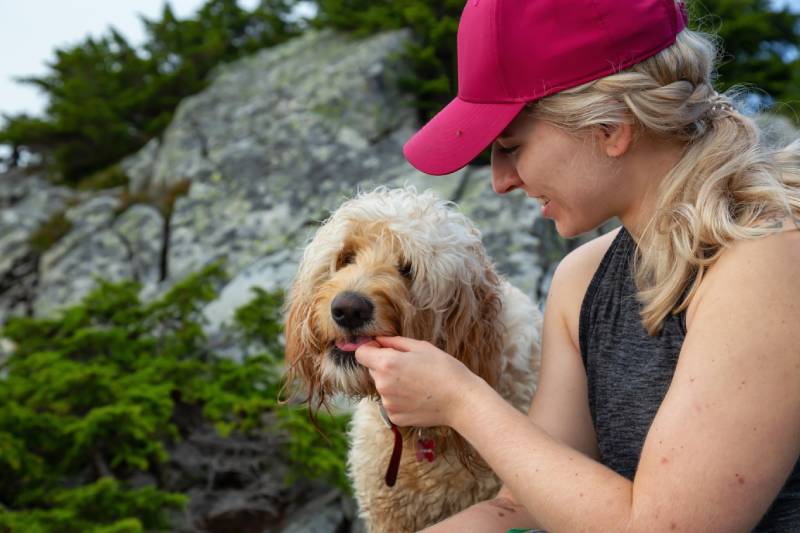
Exercise and Care Requirements
All three parent breeds used in the breeding of Goldendoodles and Irish Doodles are working dogs. They need plenty of exercise and can do very well when given a task to perform or are provided with routine work to complete. It also means that if you cannot provide a minimum of 60 minutes of decent exercise a day, these breeds might not suit you. A poorly exercised Goldendoodle can start to show signs of destructive behavior and other unwanted behavior, so exercise is important.

Which Breed Is Right for You?
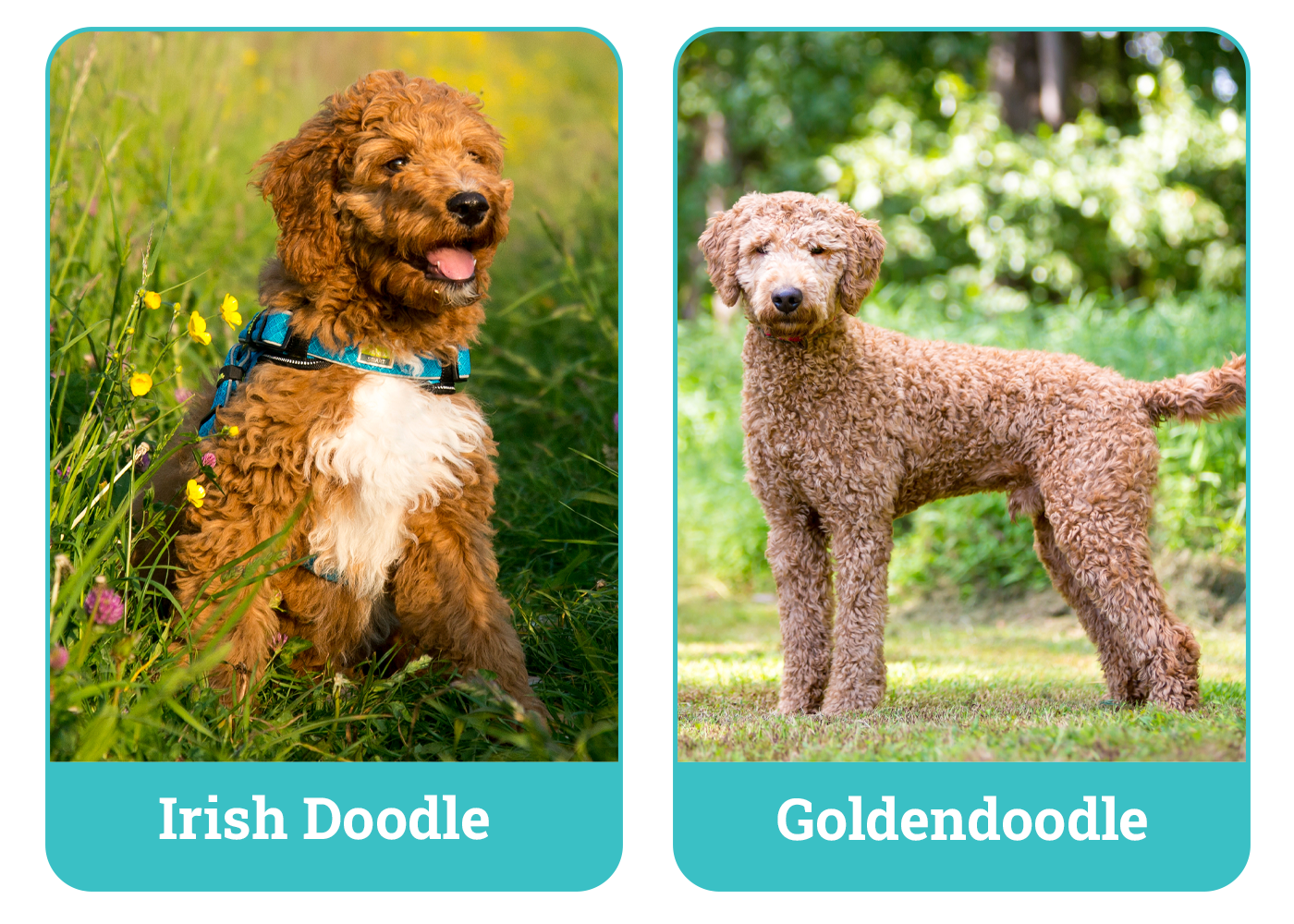
Irish Doodles and Goldendoodles make remarkable pets. They are friendly and social dogs that are reasonably easy to train and respond well to commands. As do all breeds, they need socializing, and they benefit from early and ongoing training. They also need plenty of daily exercise to stay healthy.
Although they can be “hypoallergenic” dogs, it is worth checking with the breeder to determine the generation of Doodle. Remember that there is no such thing as a dog that is completely hypoallergenic because all dogs produce the proteins that cause allergic reactions.
Featured Image Credit: Top – Joca de Jong, Shutterstock | Bottom – ALTEREDSNAPS, Pexels
